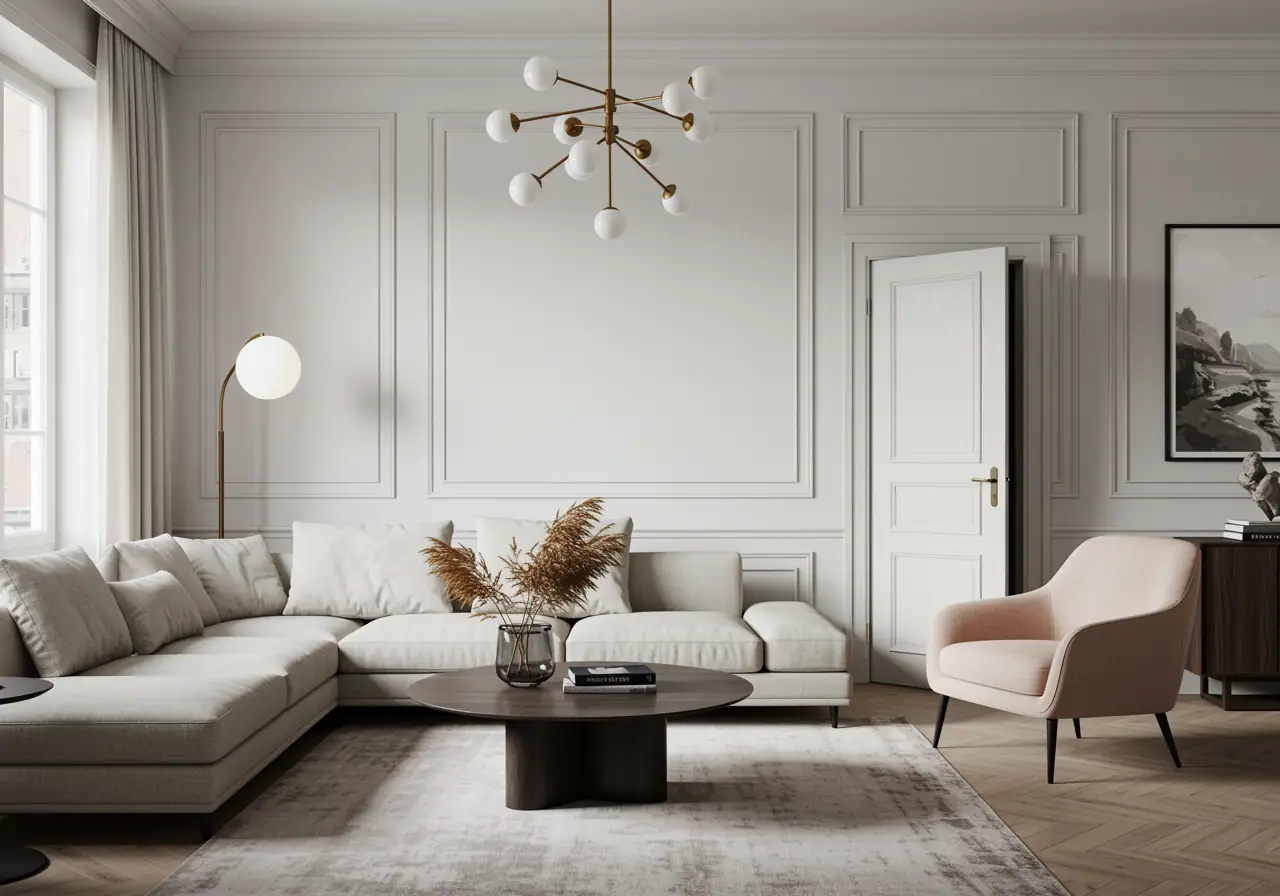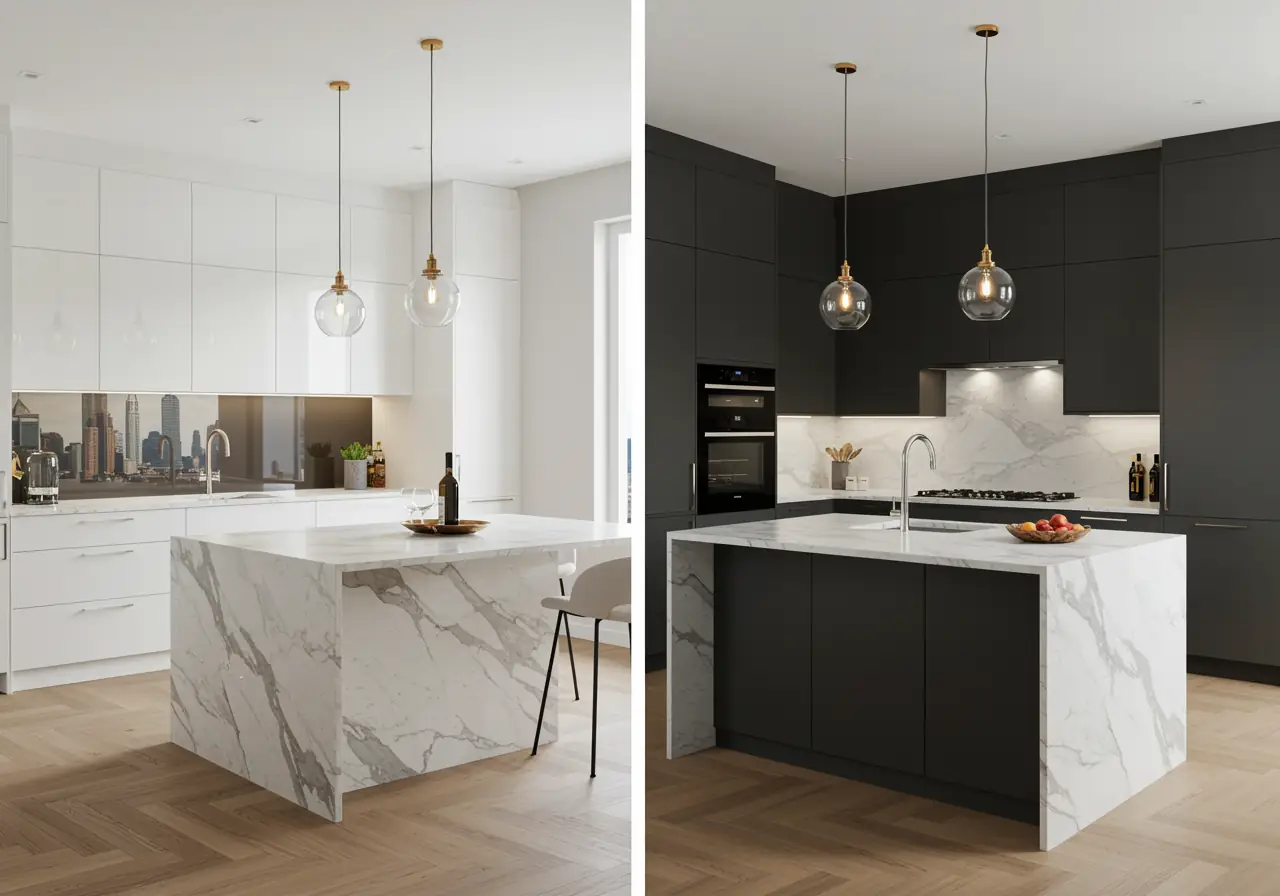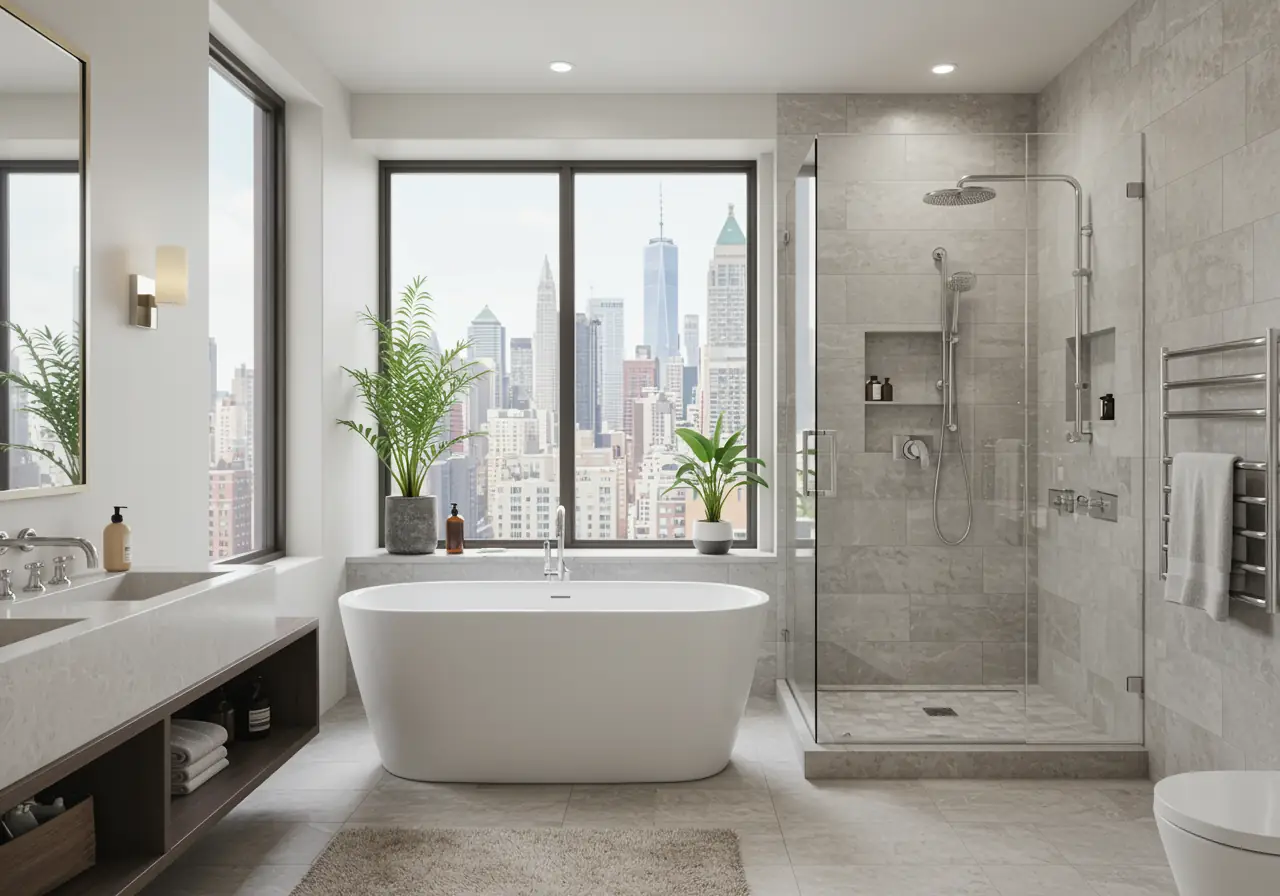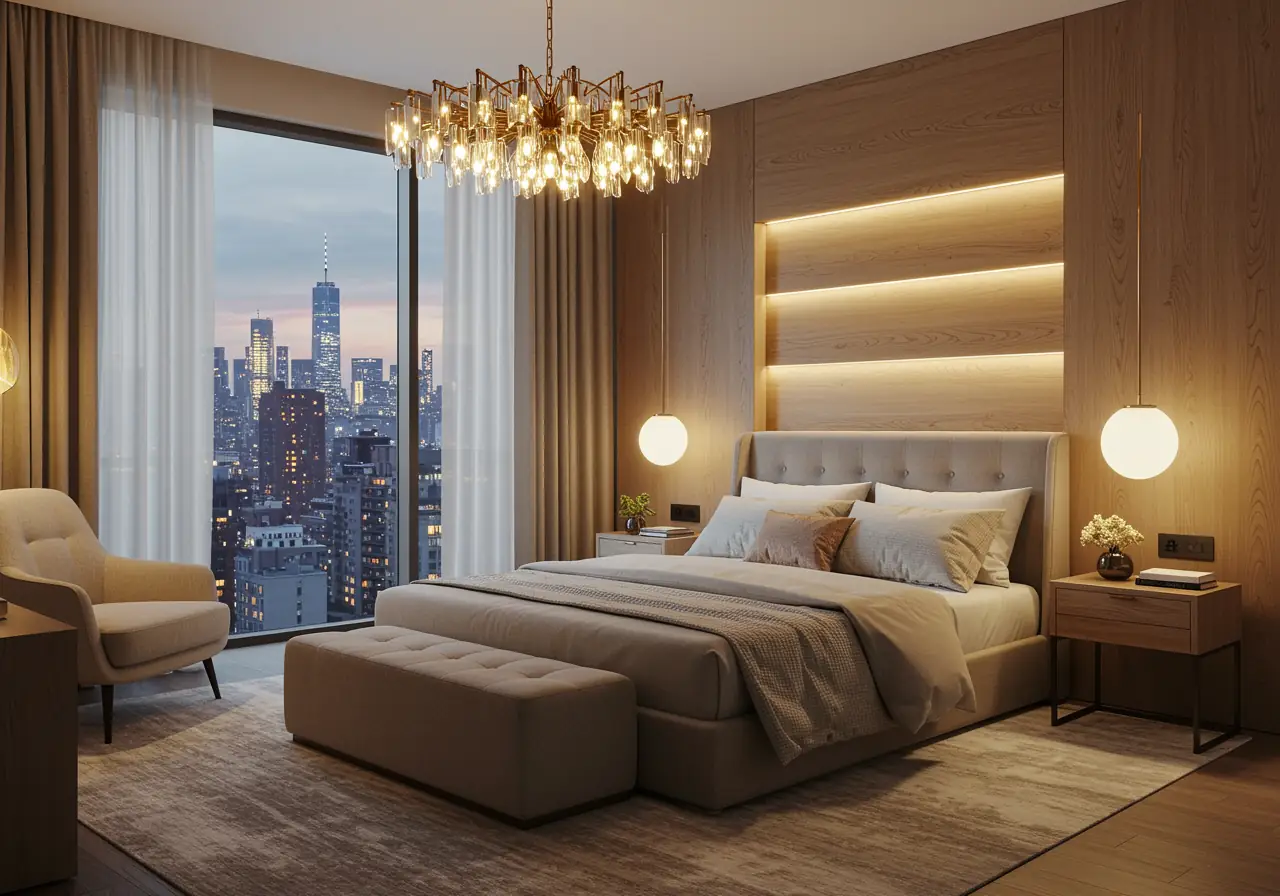How to Choose Kitchen Cabinet Hardware: Expert Tips for a Luxury Look
Did you know the right kitchen cabinet hardware can dramatically transform your space? In this guide, we’ll show you how to choose cabinet handles and knobs that elevate your kitchen’s look and function. Often overlooked in renovations, quality kitchen hardware is a simple, high-impact upgrade that brings lasting style and ease to your daily routine.
Choosing between knobs and pulls isn’t just about looks - knobs are budget-friendly, compact, and versatile, while pulls make a bold statement and offer a better grip. Size matters too: small drawers under 12" pair best with 3"-4" pulls or 1" knobs, medium drawers up to 30" work well with 4"-8" pulls or 1"-1.5" knobs, and large drawers over 30" shine with pulls 8"+ or larger knobs. In this guide, you’ll get expert tips on selecting the right hardware types, finishes, and placements to create a luxury feel tailored to your kitchen. Discover how small choices can make your kitchen truly extraordinary.

Understand the Types of Cabinet Hardware
Cabinet hardware selection requires careful consideration beyond just esthetics. Understanding the fundamental differences between hardware types will help you make informed decisions for your kitchen renovation project.

Knobs versus Pulls: What's the Difference?
Knobs are small, elegant hardware pieces with a single screw attachment point, typically measuring about an inch in diameter. These compact options emphasize either intricate detailing or minimalist esthetics, depending on your preference. Alternatively, cabinet door pulls are bar-like handles that attach at two points, offering a larger, more substantial grip surface.
The distinction goes beyond mere appearance. Pulls provide a more ergonomic grip that allows you to use three to four fingers, making them significantly easier to handle for those with mobility concerns. Conversely, knobs require a thumb and one or two fingers with a rotated hand position. This difference in grip mechanics becomes particularly important when considering how often certain cabinets will be accessed.
When to Use Knobs, Pulls, or Both
Though traditional design once dictated knobs for all doors and pulls for all drawers, contemporary kitchen design embraces more flexibility. For optimal functionality, consider installing knobs on cabinets for upper areas and pulls on lower cabinets and drawers. This arrangement maximizes accessibility since knobs work better for cabinets in hard-to-reach areas, whereas pulls distribute force more evenly for heavier drawers.
Kitchen style also influences hardware selection. Knobs generally complement traditional or vintage kitchen designs, adding warmth and character reminiscent of rustic or farmhouse styles. In contrast, straight-line rectangular drawer pulls create a minimalist, contemporary esthetic perfect for modern kitchens.

Pros and Cons of Each Type
Knob Advantages:
- More affordable than pulls, making them budget-friendly
- Easier installation requiring only one screw
- Available in numerous materials including ceramic, glass, and wood
- Better suited for smaller spaces and less frequently accessed cabinets
Knob Limitations:
- Less durable in high-use areas
- Can loosen more easily than pulls
- May catch clothing when placed on lower cabinets
- Limited grip surface for those with arthritis or hand mobility issues
Pull Advantages:
- Provide comfortable, ergonomic grip
- Distribute weight evenly when opening heavy drawers
- Available in various sizes to suit different cabinet dimensions
- Create a more substantial visual statement
Pull Limitations:
- Generally more expensive than knobs
- More complex installation requiring precise alignment of two screws
- Can appear bulky on smaller cabinetry
- May feel awkward on certain door styles
The best approach often involves combining both types to maximize both function and style throughout your kitchen space.
Ready to elevate your kitchen? Partner with KS Renovation Group to transform your space with premium cabinetry, custom millwork, and expert installation. Schedule your free consultation today.
Choose the Right Style for Your Space
The style of your cabinet door hardware serves as the finishing touch that defines your space's personality. Much like jewelry completes an outfit, your hardware choice pulls together your kitchen's overall esthetic.

Modern vs Traditional Cabinet Hardware
Modern cabinet hardware embraces simplicity, functionality, and clean lines. Look for sleek bar pulls, hidden pulls, or simple shapes with minimal detail for a contemporary look. These designs typically feature materials like stainless steel, matte black, or brushed nickel that complement streamlined cabinetry. Modern pulls often appear as straight bars or tubular shapes that blend seamlessly with the cabinet surface.
In contrast, traditional hardware celebrates elegance through intricate details and classic designs. These pieces showcase decorative flourishes, curves, and ornate patterns that add warmth and character to your kitchen. Traditional hardware frequently comes in rich, warm finishes like antique brass, oil-rubbed bronze, or copper that develop a beautiful patina over time.
How Style Affects the Look of Your Kitchen
Your hardware choice dramatically influences your kitchen's overall impression. Modern hardware creates a sleek, minimalist esthetic perfect for contemporary spaces, whereas traditional pieces establish a timeless, elegant atmosphere.
Finish selection further impacts your kitchen's mood. Currently, matte black hardware offers bold contrast on light cabinets, brushed brass adds warmth, and mixed metals create visual interest. Furthermore, statement hardware can become a focal point - oversized handles or appliance pulls on an island or pantry instantly elevate ordinary cabinetry.
Maintaining finish consistency across your hardware creates a unified look, even when mixing knobs and pulls. Alternatively, strategically combining finishes (such as matte black with brushed gold) delivers a curated, sophisticated feel in transitional kitchens.
Matching Hardware to Cabinet Door Styles
Different cabinet door styles call for specific hardware pairings:
- Shaker cabinets: Simple, clean-lined hardware maintains their classic appeal
- Traditional cabinets: Ornate pulls and classic round knobs enhance their elegant design
- Modern/flat-panel cabinets: Sleek bar pulls or tab pulls preserve their minimalist esthetic
Always ensure hardware size proportionally matches cabinet dimensions. For drawers wider than 30 inches, consider using two knobs or an appropriately sized pull to maintain visual balance. Moreover, coordinate your hardware finish with other fixtures in your kitchen, such as faucets and lighting, for a cohesive design.
Experience true luxury. From flawless cabinet hardware to complete gut renovations, trust our Manhattan team to deliver exceptional craftsmanship on time and on budget. Get your personalized quote now.
Pick the Best Size and Finish
Selecting the right dimensions and finish for your kitchen hardware is essential for creating a balanced, cohesive look that enhances your space.
What Size Cabinet Pulls Work Best?
Size proportions matter significantly for cabinet hardware. For drawers less than 24 inches wide, choose pulls approximately 1/3 the width of the drawer - for instance, a 21-inch drawer pairs perfectly with a 7-inch pull. Alternatively, wider drawers exceeding 24 inches need two pulls, each measuring about 1/6 the drawer width. For standard cabinet doors, 5-inch pulls generally work well for both upper and lower cabinets. Tall cabinet doors require longer hardware - typically between 8-12 inches depending on door height.

Choosing Between Gold, Black, and Brushed Nickel
Each finish creates a distinct mood in your kitchen:
Gold/Brass Options:
- Unlacquered brass develops character over time with a beautiful patina
- Antique brass offers pre-aged charm that remains consistent
- Lacquered brass maintains its shine permanently
- Brushed brass provides a sophisticated matte appearance
Black Hardware: Creates dramatic contrast on light cabinetry and pairs effortlessly with virtually any other finish thanks to its neutral undertone.
Brushed Nickel: Considered a safe choice that complements numerous design styles while effectively hiding fingerprints and watermarks.
How to Mix Metals Without Clashing
Despite traditional rules, mixing metals adds sophistication when done thoughtfully. Limit your selection to 2-3 metal finishes maximum per space. For harmonious combinations, ensure all chosen finishes share similar undertones - either warm or cool - to prevent clashing. Successful pairings include satin brass with black, satin nickel with polished nickel, or antique brass with bronze.
Establish a dominant finish (70-80% of hardware) and use secondary finishes as accents (20-30%). Including a two-tone object incorporating both finishes creates a visual anchor point.

Using Finish to Add Contrast or Blend In
For statement-making hardware, choose finishes contrasting sharply with your cabinetry - black hardware on white cabinets creates bold visual impact. For subtle elegance, select finishes similar to cabinet color, like oil-rubbed bronze on cherry wood. Remember to match undertones: warm finishes complement cabinets with yellow, orange or red tones, while cool finishes enhance blue, green or purple cabinetry.
Placement Tips for a Polished Look
Proper hardware placement transforms your cabinets from merely functional to professionally polished. Even the most exquisite cabinet door hardware loses its impact when incorrectly installed.
Cabinet Hardware Placement Guidelines
For cabinet doors, place knobs or pulls on the stile opposite from the hinges. Typically, position them between 1-4 inches from the door edge for optimal functionality. On wall cabinets, knobs look best when placed 2-3 inches from the lower corner of the door panel, while base cabinet knobs work well 2-3 inches from the upper corner.
For drawers less than 24 inches wide, center your hardware both horizontally and vertically. Alternatively, follow the 1/3 rule by installing pulls one-third of the way up from the bottom edge for visual balance. On drawers wider than 24 inches, consider using two knobs or pulls placed according to the rule of thirds - dividing the drawer into thirds and centering hardware in each outer section.

Using Templates for Consistency
Templates are essential tools that eliminate guesswork and ensure uniform placement across all cabinets. A quality hardware placement guide includes multiple hole options to accommodate various pull sizes, specifically 3-inch, 3-3/4-inch, and 5-1/16-inch center-to-center measurements.
To use a template effectively:
- Mark your starting point on the cabinet door or drawer front, ensuring it's level and centered
- Align the template to your desired position, selecting the appropriate hole configuration
- Mark hole positions through the template onto the cabinet surface
- Double-check alignment before drilling
For accuracy with multiple installations, place masking tape over unused template holes to avoid confusion. Additionally, use an awl instead of a pencil to mark drilling spots, preventing drill bit slippage. A cabinet hardware jig can also be a useful tool for ensuring consistent placement.
Common Mistakes to Avoid
Rushing installation is among the most frequent errors homeowners make when installing cabinet hardware. Taking time to measure carefully saves you from costly mistakes that could ruin expensive cabinetry. Likewise, inconsistent placement across multiple cabinets immediately draws attention to poor workmanship.
Before committing to hardware placement throughout your kitchen, test your chosen position on a single cabinet door panel first. This trial run ensures you're satisfied with both the look and functionality before proceeding with the entire project. Importantly, never sacrifice function for esthetics - hardware should be comfortable to use daily, not just visually appealing.
Back plates offer an elegant solution when switching from pulls to knobs or covering previous installation holes. These decorative additions can hide imperfections while adding extra visual interest to your cabinet hardware mounting.
Make your dream kitchen a reality. Contact KS Renovation Group to start your high-end renovation - our specialists handle everything from permits to stunning custom details.
Conclusion
Choosing the right kitchen cabinet hardware transforms your kitchen from ordinary to extraordinary. In this guide, you’ve seen how hardware blends function and design - knobs add simplicity and value, while pulls give ergonomic ease and bold style. Balancing modern and traditional hardware ensures your kitchen matches your unique aesthetic. Remember, size and proportion are key: small drawers pair with 3-4 inch pulls, larger cabinets need bigger hardware for visual balance.
Your choice of finish - brass for warmth, matte black for striking contrast, or brushed nickel for versatile elegance - shapes your kitchen’s entire look. Don’t overlook placement; using templates and following standard guidelines ensures a consistent, polished result across all cabinets. Above all, cabinet hardware is a chance to showcase personal style while improving daily function. This small upgrade makes a big impact, enhancing both your kitchen’s beauty and how effortlessly you use it every day.
With the right cabinet hardware and a trusted renovation partner, your kitchen can become the showpiece you’ve always envisioned. Reach out to KS Renovation Group today to bring your vision to life.
Key Takeaways
Transform your kitchen from ordinary to extraordinary with these expert hardware selection strategies that balance functionality with luxury esthetics.
• Size matters for visual balance: Use pulls 1/3 the width of drawers under 24" and two pulls for wider drawers to maintain proper proportions.
• Mix knobs and pulls strategically: Install knobs on upper cabinets and pulls on lower cabinets/drawers for optimal ergonomics and accessibility.
• Choose finishes that complement your style: Matte black creates bold contrast, brushed brass adds warmth, while brushed nickel offers versatile sophistication.
• Proper placement ensures professional results: Position hardware 2-3 inches from door corners and use templates for consistent installation across all cabinets.
• Limit metal mixing to 2-3 finishes maximum: Maintain harmony by choosing finishes with similar undertones and establishing one dominant finish (70-80%) with accent pieces.
The right cabinet door hardware serves as jewelry for your kitchen - a small investment that delivers significant impact on both daily functionality and overall esthetic appeal. When selected and installed thoughtfully, quality hardware elevates your entire space while providing years of reliable performance.
FAQs
Q1. What is the recommended size for cabinet pulls? A good rule of thumb is to choose pulls that are about one-third the width of the drawer or cabinet door. For drawers less than 24 inches wide, a single pull centered on the drawer works well. Wider drawers may require two pulls for balance and functionality.
Q2. How can I make my kitchen cabinets look more luxurious? To elevate the look of your cabinets, invest in high-quality hardware, add under-cabinet lighting, and consider painting them in a fresh color. You can also install decorative moldings or style the cabinet contents for a more upscale appearance.
Q3. What type of cabinet hardware is timeless? Stainless steel bar pulls are a classic choice that complements most kitchen styles and appliances. Their sleek, modern look is unlikely to go out of style and offers both durability and versatility in design.
Q4. Should I use knobs or handles on my kitchen cabinets? A combination of both can be effective. Consider using knobs on upper cabinets and handles on lower cabinets and drawers for optimal functionality. This arrangement maximizes accessibility and comfort in daily use.
Q5. How do I ensure consistent placement of cabinet hardware? Use templates or a cabinet hardware jig for precise and uniform installation. For cabinet doors, place hardware 2-3 inches from the corner. On drawers, center the hardware both horizontally and vertically. Always double-check measurements and alignment before drilling to avoid costly mistakes.

KS Renovation Blog
Get Inspired
Meaningful information about home remodeling for the true NYC homeowners.
OUr Clients Say
NYC kitchen remodeling Projects and more












